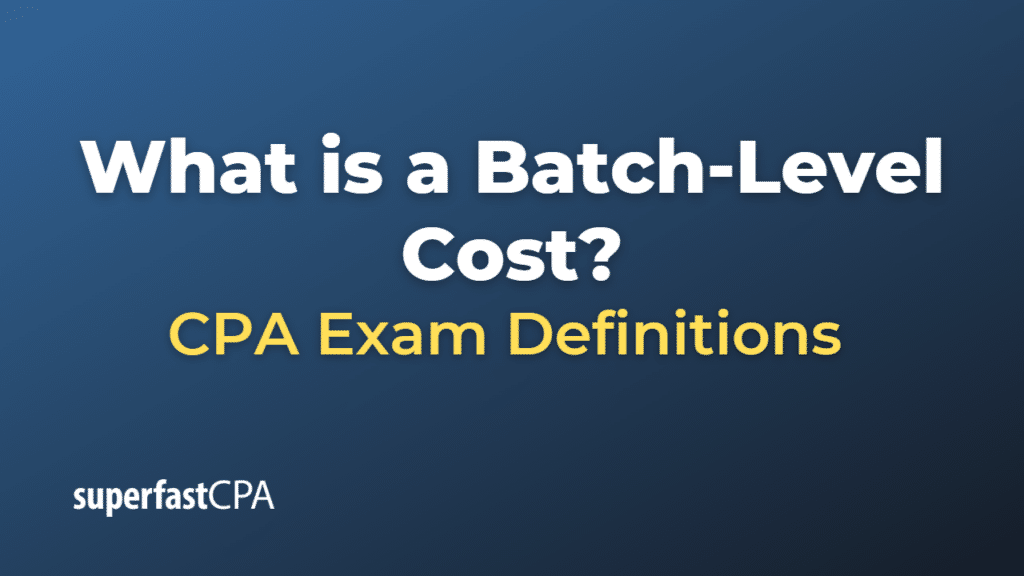Batch-Level Cost
Batch-level cost, also known as batch-level activity cost, refers to the expenses incurred in producing a batch or group of similar products or performing a set of activities during a single production run. These costs are indirectly related to individual product units and are considered indirect costs. Batch-level costs are commonly used in activity-based costing (ABC) systems, which aim to allocate indirect costs more accurately to products or services based on the activities that drive them.
Examples of batch-level costs include:
- Machine setup costs: The costs associated with preparing machines and equipment for a specific production run or batch.
- Quality inspection costs: The costs of inspecting products for quality control purposes after each production run.
- Batch-related labor costs: The costs of labor required for activities that are performed at the batch level, such as machine setup, quality inspection, or batch-related paperwork.
- Material handling costs: The costs of moving raw materials, work-in-progress, or finished goods from one stage of the production process to another for each batch.
In an activity-based costing system, batch-level costs are allocated to individual products by dividing the total batch-level cost by the number of units produced in the batch. This allocation helps businesses better understand the true cost of producing each product, which in turn supports more informed decision-making regarding pricing, production planning, and inventory management.
Example of a Batch-Level Cost
Let’s consider a fictional example of a clothing manufacturer that produces two types of shirts: Polo shirts and T-shirts. The company uses a batch production process, where it produces each type of shirt in separate batches.
Suppose the company incurs the following batch-level costs each time it produces a batch of shirts:
- Machine setup cost: $150
- Quality inspection cost: $75
- Material handling cost: $50
Now, let’s assume the company produces the following quantities of shirts in each batch:
- Polo shirts: 300 shirts
- T-shirts: 600 shirts
The total batch-level cost for each type of shirt is the sum of the machine setup cost, quality inspection cost, and material handling cost: $150 + $75 + $50 = $275.
To allocate the batch-level costs to individual shirts, divide the total batch-level cost by the number of shirts produced in each batch:
- Polo shirts: $275 / 300 shirts = $0.92 per shirt
- T-shirts: $275 / 600 shirts = $0.46 per shirt
The allocated batch-level costs for each type of shirt are:
- Polo shirts: $0.92
- T-shirts: $0.46
By allocating the batch-level costs to individual shirts, the clothing manufacturer can better understand the total cost of producing each shirt and make more informed decisions about pricing, production planning, and inventory management.













